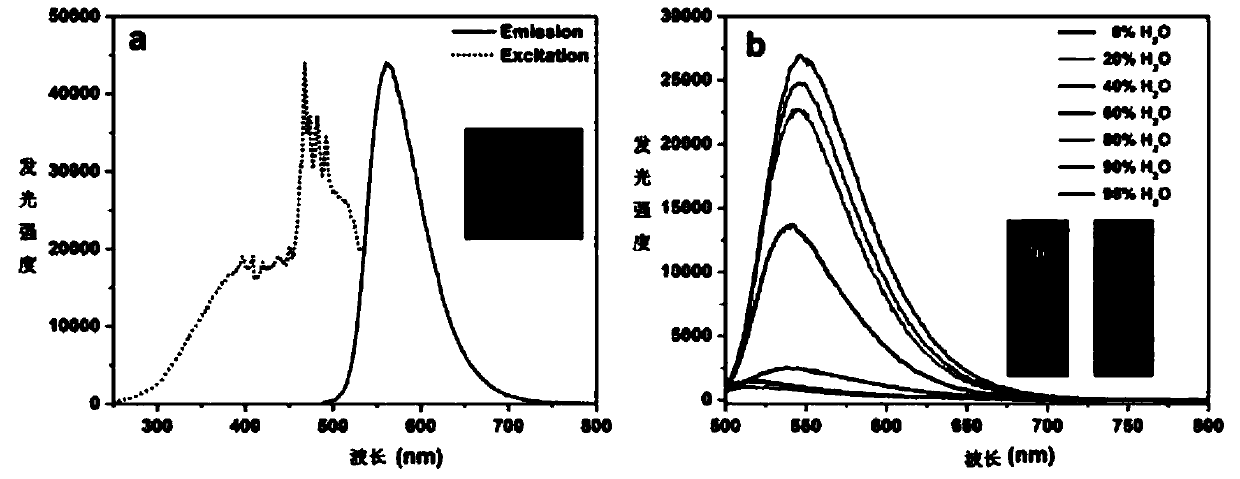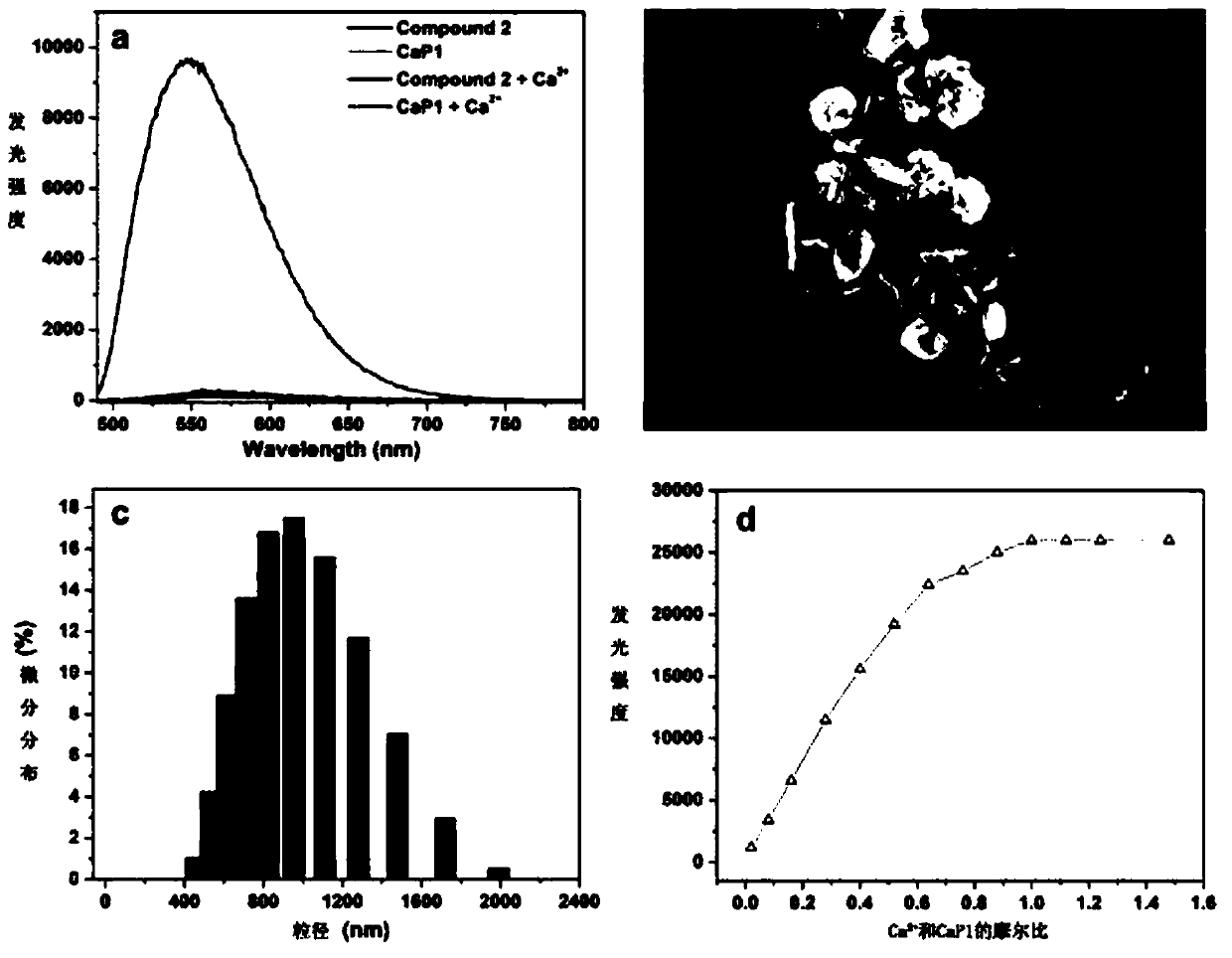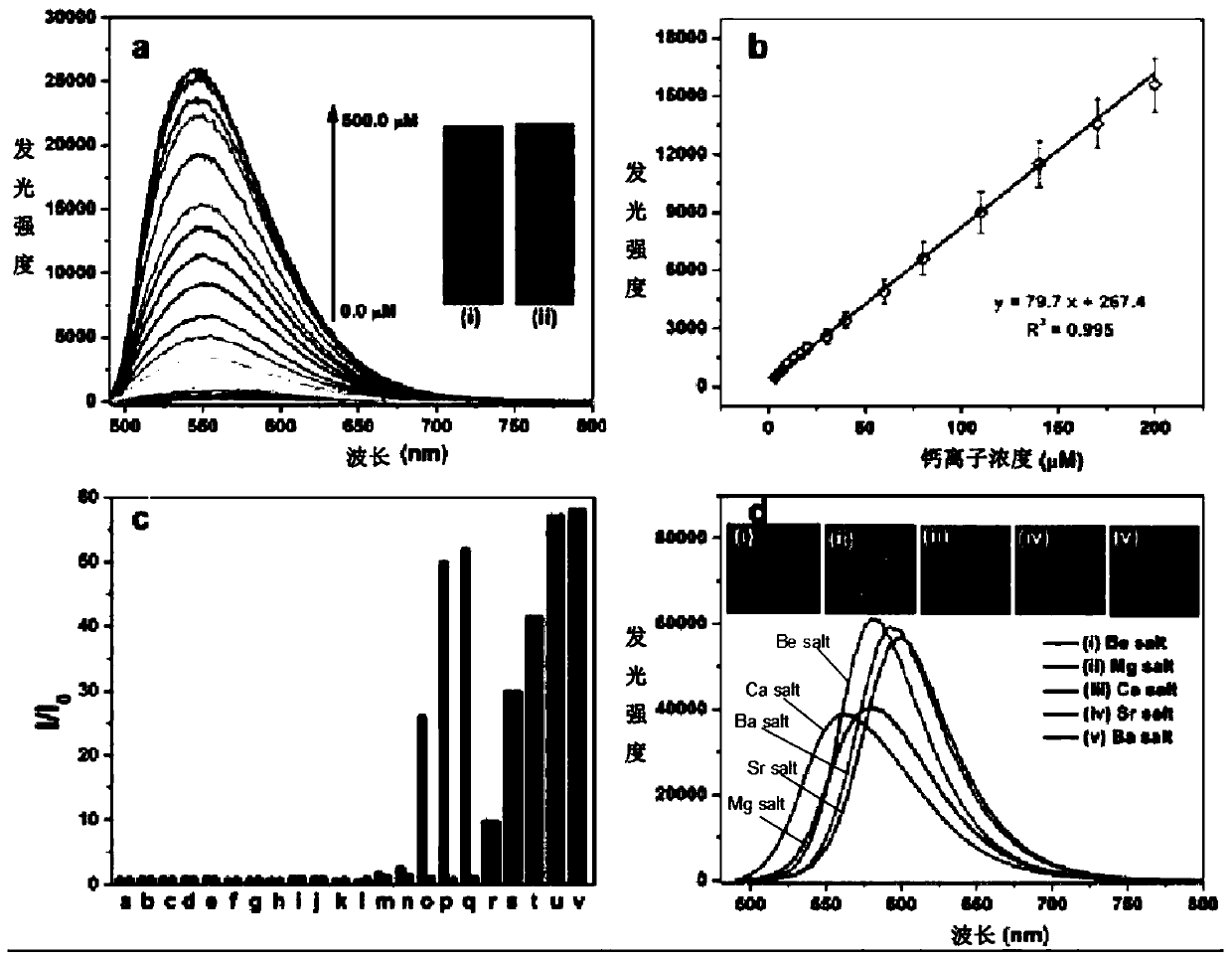Synthesis method of phosphorescence molecular probe for specific detection on calcium ions and application
A technology of phosphorescent molecules and synthesis methods, which is applied in the field of calcium ion fluorescent probes, can solve the problems of insufficient luminous intensity of probes and unsatisfactory calcium ion detection effects, and achieve excellent specific response, sensitive changes, and increased luminous intensity. Effect
- Summary
- Abstract
- Description
- Claims
- Application Information
AI Technical Summary
Problems solved by technology
Method used
Image
Examples
Embodiment 1
[0049] A method for synthesizing a phosphorescent molecular probe for specific detection of calcium ions, comprising the following steps:
[0050] Step 1, 200mg (the amount of substance is 0.75mmol) tetrachloroterephthalonitrile, 694mg (4.5mmol) 4-mercaptobenzoic acid and 1.66g (12.0mmol) potassium carbonate are added to a 100ml round bottom flask under nitrogen protection middle;
[0051] Step 2, add 10ml dry DMF to the round bottom flask to obtain the mixed solution;
[0052] Step 3, stirring the solution obtained in step 3 under heating conditions;
[0053] Heating temperature: 80°C; heating time: 48h;
[0054] Step 4: Add 30ml of hydrochloric acid with a concentration of 4M to the mixed solution obtained in step 3 to terminate the reaction, and obtain an orange precipitate as the target product.
[0055] The target product obtained in the preferred step 4 is recrystallized in ethanol after being separated by filtration and washed with distilled water, and dried in vacuo...
Embodiment 2
[0058] This embodiment discloses a phosphorescent molecular probe for the specific detection of calcium ions. The invention has aggregation-induced phosphorescence (AIP) characteristics and includes recognition units of cyano and carboxylic acid groups, and the recognition unit exhibits Excellent specific response.
Embodiment 3
[0060] A method for detecting calcium ion concentration using a phosphorescent molecular probe, comprising the following steps:
[0061] First, add the phosphorescent molecular probe and potassium hydroxide to the HEPES buffer solution with a pH value of 7.4 to prepare a phosphorescent molecular probe solution with a concentration of 0.5 mM;
[0062] Add Ca concentrations ranging from 0.0 to 500 μM to the phosphorescent molecular probe solution 2+ aqueous solution, with Ca 2+ The aqueous solution is added to the phosphorescent molecular probe solution to produce insoluble precipitates, and calcium ions trigger the aggregation of phosphorescent molecular probes to induce phosphorescence;
[0063] Use a xenon arc lamp to record the phosphorescence spectra corresponding to different calcium ion concentrations under 468nm excitation, and then obtain a standard line graph between phosphorescence intensity and calcium ion through linear fitting;
[0064] Add the aqueous solution o...
PUM
 Login to View More
Login to View More Abstract
Description
Claims
Application Information
 Login to View More
Login to View More - R&D
- Intellectual Property
- Life Sciences
- Materials
- Tech Scout
- Unparalleled Data Quality
- Higher Quality Content
- 60% Fewer Hallucinations
Browse by: Latest US Patents, China's latest patents, Technical Efficacy Thesaurus, Application Domain, Technology Topic, Popular Technical Reports.
© 2025 PatSnap. All rights reserved.Legal|Privacy policy|Modern Slavery Act Transparency Statement|Sitemap|About US| Contact US: help@patsnap.com



